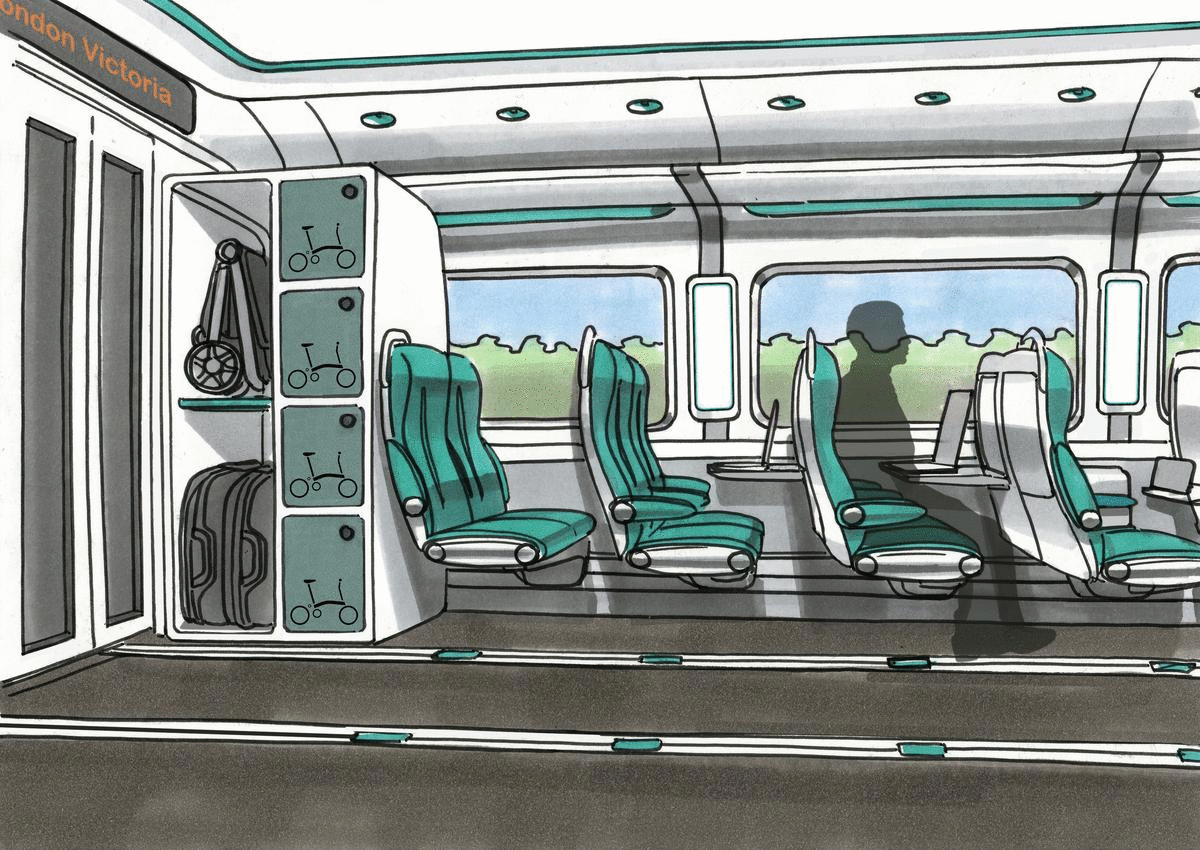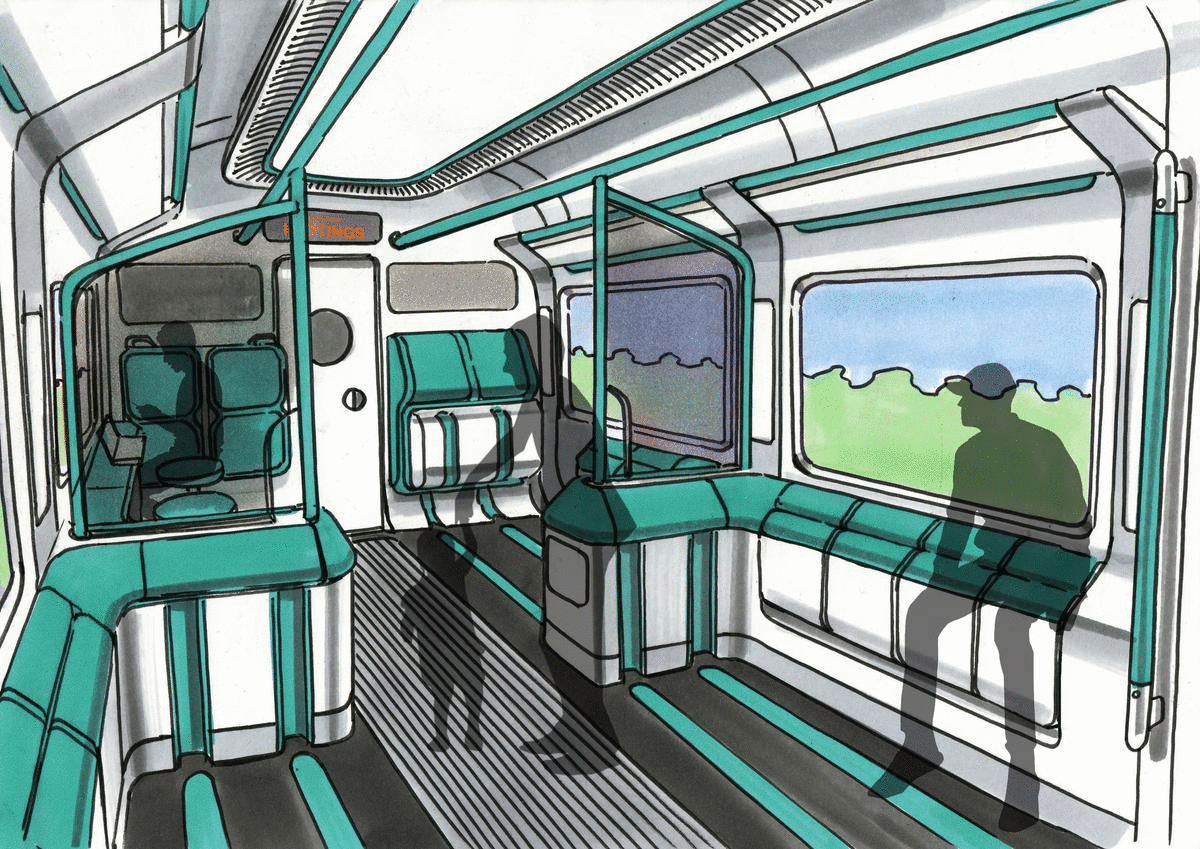H&M’s pride campaign unlocks LGBT+ history
Global – The fashion retailer is highlighting the meaning behind the universal LGBT+ rainbow symbol through an awareness-building, history-led campaign.
Its interactive experience, Beyond the Rainbow, includes a web app for people to scan rainbows that appear on any item – including flags, clothing, packaging and foods. This in turn unlocks videos of personal accounts from celebrities and everyday people across the LGBT+ community. Designed in collaboration with creative agency B-Reel, the app allows people to share the stories of recognisable faces such as actress Mj Rodriguez. In turn, the campaign ‘reclaims and recharges [the] rainbows with deep meaning,’ comments B-Reel.
By focusing on real stories, H&M seeks to communicate the importance of Pride month in a way that goes beyond novelty celebrations or products. While many brands fail to engage with Pride beyond applying tokenistic rainbow flags, take note from the long-term strategies that Tag Warner, CEO of Gay Times, shares in our recent interview.
This futuristic train carriage flexes for workers
London – Design and innovation agency Seymourpowell is exploring the future of rail travel with a concept for train interiors that will adapt to the needs of tomorrow’s office workers.
Its project, designed for Angel Trains, considers how train travel can stay relevant in the inter-Covid period, centring on a flexible passenger experience. Recognising the shifting workspace demands across societies, the interiors feature adjustable seating, fold-out elements for laptops and standing desk spaces. Extra space can also be created for luggage and bicycles, depending on passenger needs.
Seymourpowell's concept also includes antimicrobial finishes and touchless doors to limit the spread of germs. Meanwhile, interchangeable seating can also be converted into standing space during busier travel periods. ‘Innovation is key to the expansion and evolution of train travel,’ says Jeremy White, head of transport at Seymourpowell. ‘There has never been a better time to radically rethink the way we design public transport.’
This project appeals to the lifestyle shifts described by Annie Auerbach, author of book Flex, in which she considers the importance of flexible environments and routines within and beyond the workplace.
Fast food delivery that bolsters healthcare access
US – Fast food delivery service DoorDash is expanding its health and wellness product selection to provide customers with faster and frictionless access to personal care.
Seeking to connect its customers with high-quality healthcare products, the company has announced partnerships with periodcare and sexual wellness brand LOLA and telemedicine brand Hims and Hers. This move builds on the brand’s previous partnership with Sam’s Club Pharmacy, but allows DoorDash to cater for more specific health concerns by providing a platform for direct-to-consumer (DTC) brands.
Anna Katherine Barnett-Hart, director of new verticals at DoorDash, says: ‘Our partnership signifies more than a product expansion – it provides a small step in the right direction to helping customers conveniently access health and wellness products on demand by making them as accessible to order on our platform as ordering your favourite restaurant or convenience items.’
With more consumers demanding convenient product access, logistics services are experimenting with ways of elevating online orders at a hyper-local level.
Stat: Asian consumers fuelling FMCG e-commerce
Across the globe, FMCG sales are increasingly from online channels, finds research by Kantar, GfK, IRI and Intage.
In a partial lockdown scenario, the data suggests that online channels could take an 8.3% share of FMCG sales – rising to an 8.7% share under a full lockdown. This figure is double the level recorded in 2018 (4.2%) and up from 6.5% in 2020. The e-commerce share for FMCG sales is largely driven by Asian consumers, who account for one quarter in mainland China (25%) and South Korea (24.4%).
Meanwhile, in Great Britain, FMCG e-commerce accounts for 11.4% of sales. Here, a rise in sales has been partially driven by the broadening appeal of online shopping during the past year; in particular Great Britain’s online grocery penetration among retired households nearly doubled from 2019 to 2020, from 19.4% to 37.1%. With this in mind, brands must explore ways to keep older consumers, along with attracting new audiences through channels such as subscription models.
As online food sales soar, next-gen grocery services are emerging to cater for emerging demands for speed, speciality and even sustainability.


:strip_exif():strip_icc()/filestorage/images/105768/1-6eylug5pbuc8atmc-dwysa.png)
:strip_exif():strip_icc()/filestorage/images/105769/17-06-21.jpg)
:strip_exif():strip_icc()/filestorage/images/129662/sustainability-rebranded-6-future-selves-800x.gif)
:strip_exif():strip_icc()/filestorage/images/129442/250514-elekid-white-e-withe-void-close-up-16x9.jpg)
:strip_exif():strip_icc()/filestorage/images/129648/ispo2025-20251202-mb-50058.jpg)
:strip_exif():strip_icc()/filestorage/images/129588/don-julio-pehhy-gou-heathrow-04-2025-4.png)
:strip_exif():strip_icc()/filestorage/images/129599/our-story-with-david-attenborough-5-c-trustees-of-the-natural-history-museum.png)
:strip_exif():strip_icc()/filestorage/images/129577/thefuturelaboratory-tweezers-crafting-necklaces-of-futuristic-062f2548-1d0a-42f3-8f26-337b64f6cb03-1.png)
:strip_exif():strip_icc()/filestorage/images/129480/23aw-pr-sp-fenty-q3-main-talent-2937.png)
:strip_exif():strip_icc()/filestorage/images/129438/small-time9229-copy.jpg)
:strip_exif():strip_icc()/filestorage/images/129487/screenshot-2025-12-08-at-11-31-06.png)
:strip_exif():strip_icc()/filestorage/images/129402/scorpios-bodrum-by-georg-roske-17004-highres.png)
:strip_exif():strip_icc()/filestorage/images/127308/be-06.jpeg)
:strip_exif():strip_icc()/filestorage/images/128027/hinge-assetlibrary-sceneo-singleportrait1-168.jpg)
:strip_exif():strip_icc()/filestorage/images/129369/appleholidaycritters.jpg)
:strip_exif():strip_icc()/filestorage/images/127517/16x9-9.jpg)
:strip_exif():strip_icc()/filestorage/images/127478/uchronia-koibird-shop-photos-fe-lix-dol-maillot-1.jpg)
:strip_exif():strip_icc()/filestorage/images/129281/crop.png)
:strip_exif():strip_icc()/filestorage/images/129660/video-thumbnail-template-copy.jpg)
:strip_exif():strip_icc()/filestorage/images/129666/time0324.JPG)
:strip_exif():strip_icc()/filestorage/images/106541/4-gen-x.jpg)
:strip_exif():strip_icc()/filestorage/images/129636/evilray-ooh-launch1-updated.jpg)